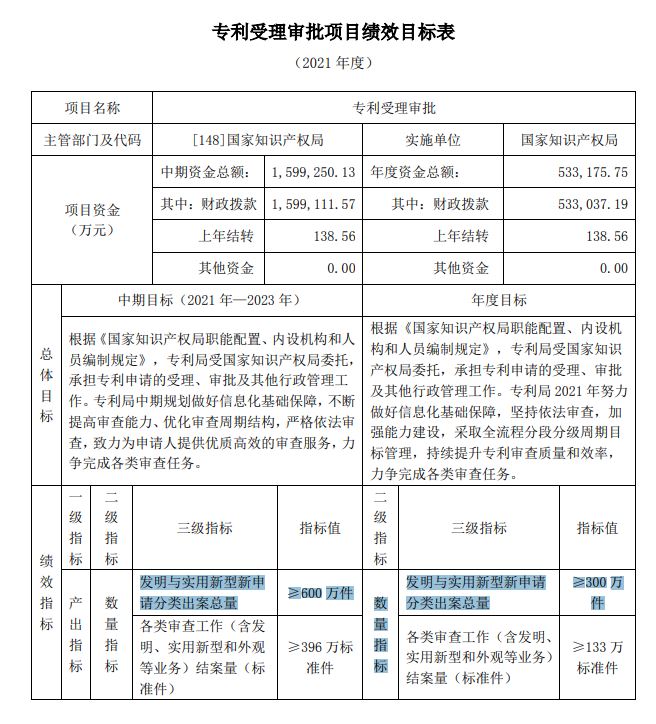China Releases Patent Office Budget Indicating Expected Potential Decline in Future Patent Application Filings as China Transitions from Quantity to Quality
On March 25, 2021, the China National Intellectual Property Administration (CNIPA) released their 2021 budget (国家知识产权局2021年部门预算). Part 3, Section 10 includes Performance Goals and Indicators for 2021 and mid-term from 2021 to 2023 indicating a potential drop in expected patent application filings. In 2021, CNIPA’s expecting a total of 3 million or more patent applications (combined invention patent application and utility model filings) and only 6 million or more over the three-year period of 2021 -2023 (an average of 2+ million/year or 1.5+ million/year in 2022 -3 assuming 3 million are filed in 2021). Note that in calendar year 2019, the last year in which full year application filing data is available (China has ceased publishing filing data in December 2020), there were about 3.67 million patent application filings (combined utility model and invention patent applications).

CNIPA’s expected drop in patent application filings from a minimum of 3 million per year in 2021 to an average minimum of 2 million per year over the next 3 years is presumably due to two factors as China transitions from quantity to quality of patent application filings: 1. the elimination of patent subsidies for filing patent applications by June 2021; and 2. the crackdown on the filing of irregular patent applications (e.g., potentially 400,000 irregular applications will be withdrawn as reported by China’s IPRDaily).
Irregular patent applications were defined in the “Measures Regarding the Regulation of Patent Applications” (关于规范申请专利行为的办法) released March 12, 2021 as follows:
(1) Simultaneously or successively submitting multiple patent applications that are obviously the same in invention-creation content, or are essentially formed by simple combinations of different invention-creation features or elements;
(2) The submitted patent application contains fabricated, forged or altered inventions and creations, experimental data or technical effects, or plagiarism, simple replacement, patchwork of existing technology or existing designs, etc.;
(3) The invention-creation of the submitted patent application is obviously inconsistent with the actual research and development capabilities and resource conditions of the applicant and inventor;
(4) The invention-creation content of multiple patent applications submitted is mainly generated randomly by computer programs or other technologies;
(5) The invention-creation of the submitted patent application is an invention deliberately formed for the purpose of circumventing patentability examination, which is obviously inconsistent with technical improvement or design common sense, or has no actual protection value, is inferior, piles up, or unnecessarily limits the scope of protection Creation, or content without any search and review significance;
(6) In order to evade the supervision measures against irregular patent applications, multiple patent applications that are substantially related to a specific entity, individual or address are scattered, submitted sequentially or in different places;
…
(9) Other irregular patent applications and related behaviors that violate the principle of good faith and disrupt the normal order of patent work.
Another performance goals indicator of interest includes the 2021 examination cycle (from requesting examination until grant or final decision) will be 19 months and decreasing to 17 months on average from 2021 – 2023 (this compares with a 2020 goal of 22 months declining to 16.5 months in the 2020 Budget).
The full text of the 2021 Budget is available here (Chinese only): 国家知识产权局2021年部门预算.
Back to All Resources

